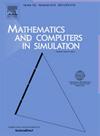A digital twin approach based method in civil engineering for classification of salt damage in building evaluation
IF 4.4
2区 数学
Q1 COMPUTER SCIENCE, INTERDISCIPLINARY APPLICATIONS
引用次数: 0
Abstract
The integration of digital twins and machine learning models in civil engineering has revolutionized the inspection and maintenance of buildings and structures. Digital twins, as precise virtual replicas of physical assets, enable continuous monitoring and predictive maintenance, enhancing the reliability and efficiency of structural assessments.
This research aims to develop a convolutional neural network (CNN)-based approach for classifying salt damage in concrete structures, integrating digital twin technologies to enhance structural health monitoring and damage detection. This study leverages transfer learning techniques, utilizing six state-of-the-art pre-trained architectures, including VGG-16, InceptionV3, ResNet50, VGG-19, DenseNet121, and MobileNet. After extensive evaluation, VGG-16, was chosen as the final model for fine-tuning, achieving high accuracy in the classification of salt damage. The digital twin approach provides a virtual representation of structures to enable predictive maintenance and reduce subjectivity in inspections.
The fine-tuned CNN models demonstrated state-of-the-art accuracy in detecting salt damage, significantly outperforming traditional visual inspection methods. The use of digital twins enabled continuous monitoring and effective prediction of structural damage. The developed models offer a robust and efficient alternative to manual inspections, supporting the transformation of structural health monitoring in civil engineering. The results underline the potential of combining digital twins and deep learning to achieve precise and reliable structural assessments.
土木工程中基于数字孪生方法的建筑盐损伤分类评估方法
土木工程中数字孪生和机器学习模型的集成彻底改变了建筑物和结构的检查和维护。数字孪生作为物理资产的精确虚拟复制品,能够实现持续监测和预测性维护,提高结构评估的可靠性和效率。本研究旨在开发一种基于卷积神经网络(CNN)的混凝土结构盐损伤分类方法,结合数字孪生技术,增强结构健康监测和损伤检测。本研究利用迁移学习技术,利用六种最先进的预训练架构,包括VGG-16、InceptionV3、ResNet50、VGG-19、DenseNet121和MobileNet。经过广泛的评估,最终选择VGG-16模型进行微调,获得了较高的盐害分类精度。数字孪生方法提供了结构的虚拟表示,以实现预测性维护并减少检查中的主观性。经过微调的CNN模型在检测盐损伤方面表现出了最先进的准确性,显著优于传统的视觉检测方法。数字孪生的使用使结构损伤的持续监测和有效预测成为可能。所开发的模型提供了一种强大而有效的替代人工检查的方法,支持土木工程结构健康监测的转变。研究结果强调了将数字双胞胎与深度学习相结合以实现精确可靠的结构评估的潜力。
本文章由计算机程序翻译,如有差异,请以英文原文为准。
求助全文
约1分钟内获得全文
求助全文
来源期刊

Mathematics and Computers in Simulation
数学-计算机:跨学科应用
CiteScore
8.90
自引率
4.30%
发文量
335
审稿时长
54 days
期刊介绍:
The aim of the journal is to provide an international forum for the dissemination of up-to-date information in the fields of the mathematics and computers, in particular (but not exclusively) as they apply to the dynamics of systems, their simulation and scientific computation in general. Published material ranges from short, concise research papers to more general tutorial articles.
Mathematics and Computers in Simulation, published monthly, is the official organ of IMACS, the International Association for Mathematics and Computers in Simulation (Formerly AICA). This Association, founded in 1955 and legally incorporated in 1956 is a member of FIACC (the Five International Associations Coordinating Committee), together with IFIP, IFAV, IFORS and IMEKO.
Topics covered by the journal include mathematical tools in:
•The foundations of systems modelling
•Numerical analysis and the development of algorithms for simulation
They also include considerations about computer hardware for simulation and about special software and compilers.
The journal also publishes articles concerned with specific applications of modelling and simulation in science and engineering, with relevant applied mathematics, the general philosophy of systems simulation, and their impact on disciplinary and interdisciplinary research.
The journal includes a Book Review section -- and a "News on IMACS" section that contains a Calendar of future Conferences/Events and other information about the Association.
 求助内容:
求助内容: 应助结果提醒方式:
应助结果提醒方式:


